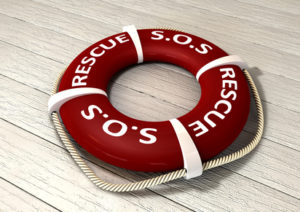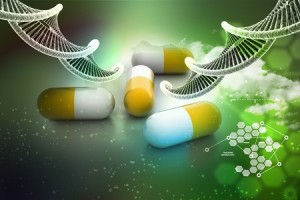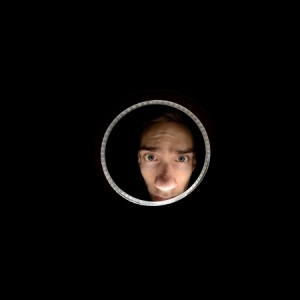Psychedelic Depression
You are lying in a comfortable reclining chair in a private room with low lights. You are dressed in your street clothes, but you are also connected to monitors for blood pressure, pulse and oxygen saturation. A medical practitioner locates a vein on your arm and uses a tiny needle to insert a thin, flexible tube into your vein. You barely feel the needle inserted because it doesn’t hit any muscle. The tube is connected to a bag of fluid raised a couple of feet above your head and it delivers a carefully measured dose of ketamine directly into your bloodstream to treat your depression.
The above description is for a procedure called ketamine infusion, as it was described on the Ketamine Advocacy Network website. Further reading suggests you will have an almost ethereal experience. It could include a dissociative effect, an out-of-body sensation. You will appear to be asleep, but in reality your mind is very active. “In a state of deep relaxation, you may find that you’re able to reflect on past traumas or current anxieties in a very calm, matter-of-fact way – with zero emotional pain.” Many patients prefer to let their thoughts wander. They suggest doing whatever maximizes your sense of calm and relaxation, as long as your doctor agrees.
Although most patients find the experience relaxing and pleasant, some can have brief moments of fright. Patients who begin the infusion in a state of high anxiety seem most susceptible to this. Many are desperately pinning all their hopes on ketamine to relieve their suffering, which is totally understandable but can amp up their anxiety. Some patients get very tense at the thought of not being in total control of their thoughts or body. Try your best to relax before the infusion begins.
What’s not to like about the above-described treatment for depression? First, remember that it is not an FDA-approved treatment. Second, ketamine used in higher doses than in an infusion is the club drug favorite, Special K. Third, the antidepressant effect from ketamine is limited and of an unknown origin.
Ketamine is a Schedule III controlled substance, approved as a general anesthetic. As Peter Simons reported, it is not approved by the FDA as a treatment for depression and other mental health concerns because of a lack of clear benefit and limited knowledge of its risks. There is some truth to the fact that as a generic drug, it is not attractive for pharmaceutical companies to develop it as a therapeutic agent; they won’t make billions of dollars with it. But the research for its efficacy in treating depression is mixed. Simons referred to a new study by Voort et al. in the Journal of Affective Disorders that extended the duration of depressive symptom remission, but did not fully remit the depression. He said:
Only one of the twelve patients experienced remission of depression. The pattern shown by previous studies is similar. Within hours after treatment, patients experience a euphoric release of depression, but depressive symptoms return within a day or two. For some patients, they return worse than before. Additional treatments every day or every week have the same effect, but the effect is not cumulative. Once weaned off the continual weekly ketamine treatments, around 90% of patients relapse. As evidenced by this current study, even with continuous treatment, only a small number of patients experience any benefit.
Adverse effects can include increased symptoms of depression, anxiety, and suicidality. Only seven of twelve participants reported any therapeutic effect, and only one patient experienced remission by the end of the trial. One person died by suicide and another was hospitalized for suicidality. “These results confirm suspicions that ketamine is a dangerous experimental treatment with limited benefits and serious risks.” These seem to be further reasons why the FDA has yet to approve ketamine as a treatment for depression.
The addictive potential with ketamine is a real concern. The fast-action and rapid fading effect of the drug seems to potentiate its psychological dependency. Ketamine is also widely misused in East and South-East Asia. In Ketamine: Dreams and Realities, Karl Jensen, a British psychiatrist and a leading authority on ketamine said it was far more likely to create periods of dependence than other psychedelic drugs. “The risk is certainly very high in comparison with drugs such as LSD, DMT, and psilocybian mushrooms, but it is not more than half of those who like it.”
Tolerance is rapid and marked; and the ability to remember the experience fades. Some users, he said, will continue to take ketamine for its cocaine-like effects, its calming effects or its potential to relieve anxiety or depression. However, the fading effect can lead to using higher doses in order to resume its dissociation experience. Jensen then gave an extended quote from The Essential Psychedelic Guide, by D.M. Turner, who died from a ketamine-related incident. The Erowid report on Turner said that in 1996 Turner drew a hot bath, injected an unknown amount of ketamine “and settled in for the last trip of his life.” He lost consciousness at some point and drowned. Turner wrote:
A major concern regarding safe use of Ketamine is its very high potential for psychological addiction. A fairly large percentage of those who try Ketamine will consume it non-stop until their supply is exhausted. I’ve seen this in friends I’ve known for many years who are regular psychedelic users and have never before had problems controlling their drug consumption. And I’ve seen the lives of several people who developed an addiction to Ketamine take downward turns. After about two years of once-per-week Ketamine use I even found that I had developed an addiction…Amongst those I know who use Ketamine, I’ve seen very few who can use it in a balanced manner if they have access to it…One of the most remarkable things I experienced in becoming aware of and breaking my Ketamine addiction was the intervention of…[psilocybian mushrooms and DMT]. The DMT provided insights into the negative effects Ketamine was having on my life: a reduction in ambition; a reduction in healthy mortal fears, such as the fear of death; as well as a reluctance to confront fears or difficult tasks and situations directly. Frequent use of Ketamine can lure one as an escape since a blissful and fantastic state of fearless, disembodied consciousness is so easily available.
For more discussion of ketamine and its use as a treatment for depression, see: “Ketamine Desperation,” “Family Likeness in Depression Drugs?”, “Ketamine to the Rescue?”, “Falling Down the K-Hole.”
Although ketamine is a generic drug, esketamine (C13H18CINO) is a patented knock-off of ketamine (C13H16CINO) by Janssen Pharmaceuticals, a division of Johnson & Johnson. In August of 2016 esketamine was granted its second designation by the FDA as a Breakthrough Therapy for treating major depression with an imminent risk of suicide. A Breakthrough Therapy Designation expedites the development process of a drug when it demonstrates the potential for substantial improvement over existing therapies of if it for life-threatening conditions.
Esketamine is an intranasal product, not administered by infusion. Like ketamine, it is a general anaesthetic and a dissociative. It acts primarily as an antagonist with the NMDA receptor, but is also a dopamine reuptake inhibitor. It is more potent and is eliminated more quickly from the body than ketamine. There is also some evidence that it has a more dissociative (hallucinogenic) effect than ketamine.
A study published in Biological Psychiatry by Singh et al. reported the efficacy and safety data from one of the completed FDA trials for esketamine. Science Daily quoted Murray Stein, a deputy editor for Biological Psychiatry, as saying the study showed benefits of the drug over placebo and suggested that the lower of the two doses could be equally effective and also safer. “Though the mechanism of ketamine (and esketamine) antidepressant effects remains unclear, this study clearly demonstrates a benefit, at least in the short term, of this drug for treatment-resistant depression.” Additional clinical trials are testing a wide range of doses to determine the optimal dosing, assessing other possible side effects, and seeking to establish the safety of esketamine in the longer term. Unfortunately, clinical trials don’t last long enough for most drugs to clearly establish an adverse effect like addiction.
There are now two separate drugs in development as fast-acting antidepressants, esketamine and ALKS-5461, whose active ingredients can be reasonably inferred to lead to addiction. As was already mentioned, ketamine is currently classified as a Schedule III controlled substance by the DEA, as is buprenorphine, the active ingredient in ALKS-5461. I hope the FDA will acknowledge the very real risk of addiction with these new molecular entities. The seductive allure of a fast-acting antidepressant could override this concern and lead to their approval as antidepressants without this needed warning. If they are approved, they should at least be classified as Schedule III Controlled Substances.





